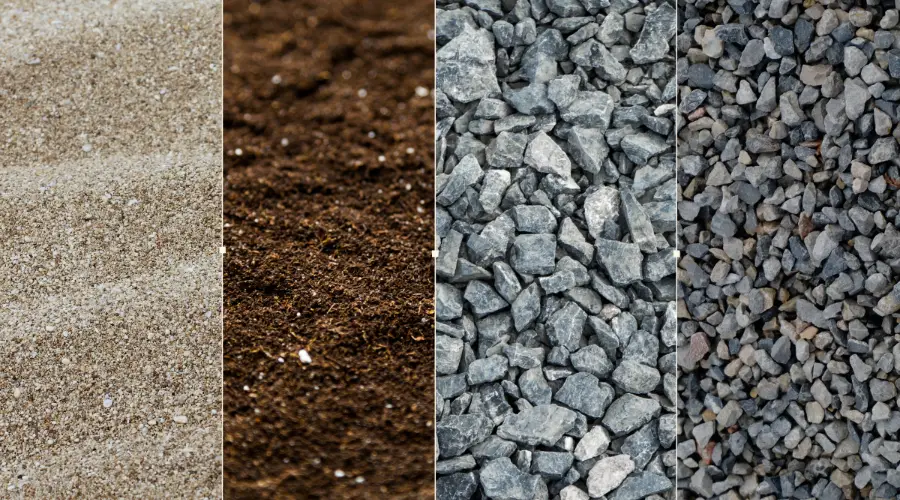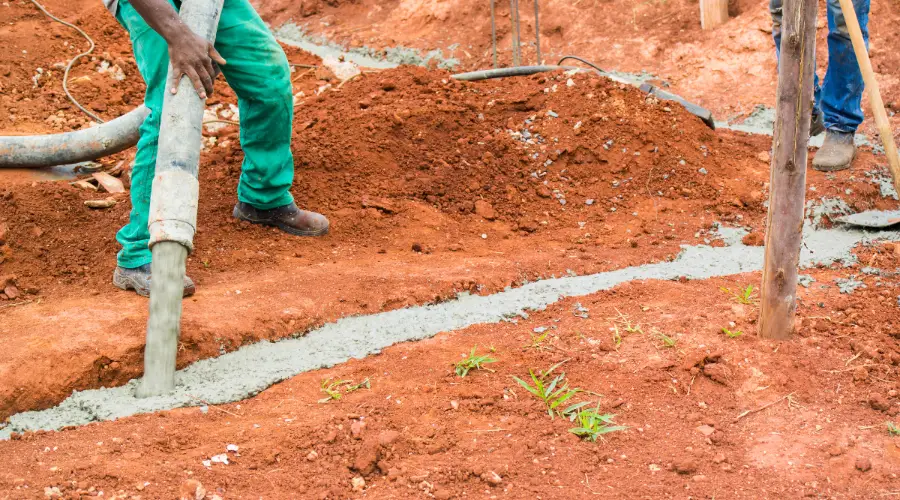Building a strong, stable, and durable foundation is necessary for any construction project. Most of them focus on the types of materials and the building techniques used in the structure; the backfilling process is often overlooked. Backfilling plays a major role in construction, and it offers numerous advantages to the structure. Here we take a detailed look at what is backfilling in construction and how it is done.
What is Backfilling?
Backfilling is the refilling of the excavated area around the foundation or structure with the necessary backfilling material. It is an important construction process that ensures a structures’ strength, stability, and durability. Despite supporting the foundation, it helps to prevent settling, erosion, and other structural problems.
Types of Backfilling Materials

Soil
The soil excavated around the foundation can be refilled to provide good compaction and adequate support. In other cases, the soil from quarries can be used as filling material. Different types of soil, such as sandy soil, clay soil, and loamy soil can be used. It is not advisable to use black soil as the filling material, as it has an expansion property that is not suitable for construction.
Sand
Sand, sourced from lakes and rivers can be used for backfilling. However, the chosen sand should be free from dust, organic matters and impurities. The sand should not contain clay or silt soil more than 5%.
Gravel
Gravels that consist of small and rounded stones of various sizes can be used for backfill. It has excellent drainage properties and can be used for drainage systems, foundations and retaining walls to provide good stability and support.
Crushed Stone
Crushed stones that are used for roads and railways can be used for backfilling. The large stones can be crushed into small pieces and can be used for better compaction, distributing heavy loads, and high stability.
Fly Ash
Fly ash is a by-product of burning coal, which can be obtained from thermal power plants. It can be used in places where other backfill materials are rare. It is lightweight and has good compression properties, making it one of the preferred backfill materials.
Purposes of Backfilling in Construction
The main purpose of backfill in construction is to reinstate the stability and structural integrity of the structure after excavation. It is used to help the foundation to balance the structural loads and prevent the structure from collapsing. Another major role of backfill is to create an effective drainage that helps prevent the foundation from potential water damage. They are also used to prevent underground utilities such as water pipelines, gas lines and electrical conduits from damage by stabilising the surroundings.
What is the Backfilling Process?
Excavation Assessment
After the foundation is laid, the excavation site is assessed to evaluate the soil conditions, depth of the excavation, environmental conditions and the appropriate backfilling methods.
Material Selection
After analysing the excavation, the right backfill material is chosen, and the necessary equipment needed for the backfill is transported to the site. The selected backfill material should possess compaction, load-bearing, load-distribution and drainage capabilities.
Cleaning & Removing Water
The backfilling area should be cleared of any organic matter. Any water deposited in the excavated area should be removed before the backfill materials are put into the excavation.
Layered Placement
The backfill material (soil) should be placed in layers, where the layering should not be more than 20 to 30 cm in depth, which is ideal for compaction. Each layer should not exceed this depth, as they may result in poor compaction and uneven settling.
Watering
After each layer of soil is spread, water is sprinkled all over the layer until it attains adequate moisture content, suitable for compaction.
Compaction
After layering and sprinkling the water, mechanical compactors or manual rammers are used to remove voids and increase the density of the material. This is one of the important processes that helps in increasing the stability and load-bearing capacity of the structure. Repeat the process until the area is filled and compacted thoroughly.
Final Inspection & Adjustments
After filling and compacting, the backfill area is inspected, and any displacements and faults should be adjusted until the backfill is ready for the construction process.
What are the Backfilling Methods?
Compacting
It is one of the most common and important backfilling and filling methods used in the construction process. It is the process of making the backfill material dense layer by layer. Compaction equipment such as vibratory rollers, plate compactors, or tamping rammers can be used to increase the density by locking the voids.
Water Jetting
Water jetting uses the water under pressure to compact granular soils such as sand and gravel. This is ideal for places where mechanical compaction can be challenging and construction timing is crucial. Water, through a pipe or hose, is poured into the filling material under controlled pressure to fill the voids and make the soil particles settle closely. When the water drains away, the backfill becomes compact.
Filling

It is the process where the backfill material is placed into the excavation using excavators, bulldozers, or conveyors. The materials are added layer by layer to ensure that they are distributed evenly and compacted according to the structural requirements.
Dumping
It is the process of dumping the soil directly into the excavation to the required volume. Trucks or conveyors are used, and this process allows rapid settling after spreading the material into the excavation.
Conclusion
Backfilling is an important phase in the construction process, especially for the building foundations. Using the right backfill materials and proper compaction at the right time is crucial to achieving strength, stability, and durability. Backfill prevents the structure from settling, collapsing, and other structural problems. Proper backfilling can also help reduce the repair cost and ensure safety. Considering all, the backfilling process needs to be prioritised and carried out under expert supervision, which is mandatory to keep the structure stable for a long period of time.

